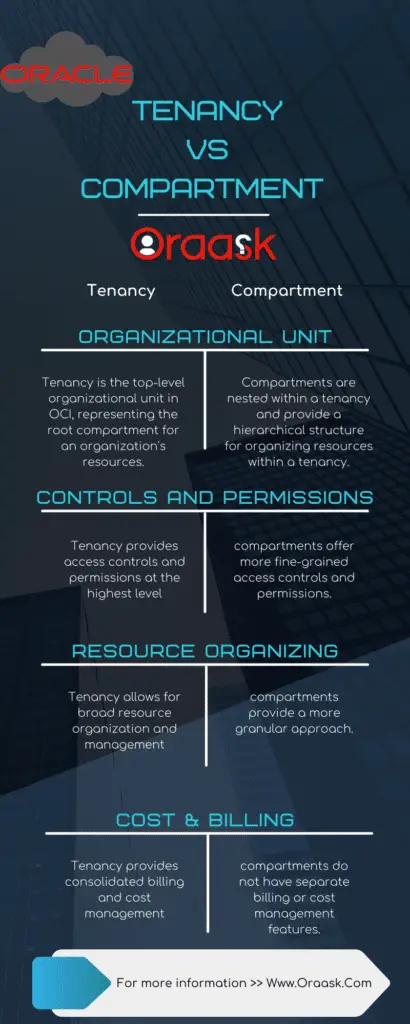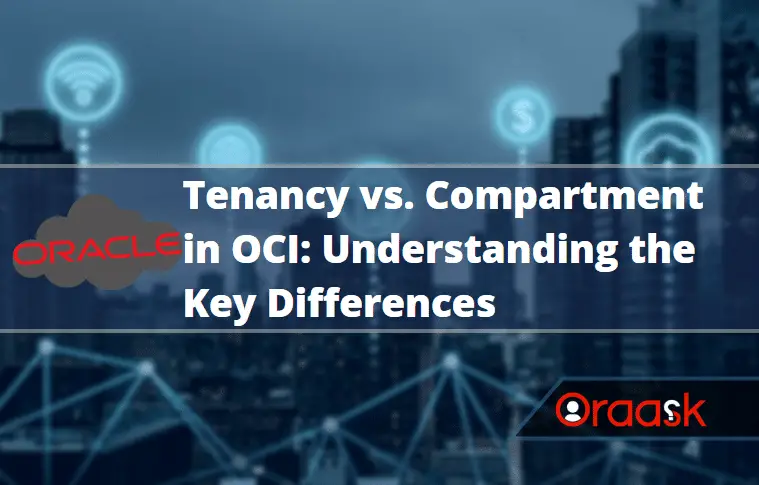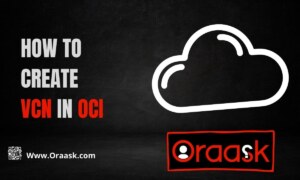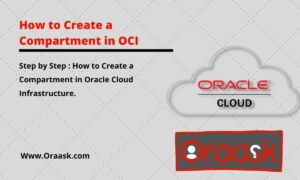Oracle Cloud Infrastructure (OCI) is a popular cloud computing platform that offers a wide range of services for businesses and enterprises. When using OCI, one of the crucial decisions organizations must make is whether to use a tenancy or a compartment to organize and manage their resources. In this article, we will explore the differences between tenancy and compartments in OCI and discuss their benefits, advantages, and use cases.
Introduction to OCI (Oracle Cloud Infrastructure)
OCI, or Oracle Cloud Infrastructure, is a cloud computing platform provided by Oracle Corporation that offers a comprehensive set of cloud services for businesses to build, deploy, and manage their applications and infrastructure. OCI provides a wide range of services, including compute, storage, networking, database, security, and management tools, to help organizations meet their diverse computing needs in a scalable and secure manner.
Understanding Tenancy in OCI
Tenancy in OCI refers to the highest level of organization and isolation within OCI. It represents an organization’s top-level account or subscription to access and manage its OCI resources. Each tenancy in OCI is completely isolated from other tenancies and provides its own set of resources, policies, and access controls.
Definition and Concept of Tenancy
In OCI, a tenancy is a virtual compartment that represents the root compartment for an organization’s resources. It is created when an organization signs up for an OCI account and serves as the highest level of resource organization within OCI. A tenancy can have multiple compartments, which can be used to organize further and manage resources.
Benefits and Advantages of Tenancy in OCI
There are several benefits and advantages of using a tenancy in OCI:
Isolation and security: Tenancy provides complete isolation between resources of different organizations or accounts in OCI, ensuring that data and applications are securely separated and protected.
Granular access controls: Tenancy allows organizations to define fine-grained access controls and permissions for users and groups, enabling precise control over who can perform actions on specific resources.
Resource management and organization: Tenancy provides a hierarchical structure for organizing and managing resources, allowing organizations to create compartments and sub-compartments to logically group and organize resources based on their needs.
Billing and cost management: Tenancy provides a consolidated view of resource usage and costs, making it easier for organizations to track and manage their cloud spending.
Understanding Compartment in OCI
A compartment in OCI is a logical container within a tenancy that is used to organize and manage resources based on their lifecycle or ownership. Compartments provide a way to divide further and segregate resources within a tenancy, enabling more fine-grained access controls and resource management.
Definition and Concept of Compartment
In OCI, a compartment is a logical container that is used to organize and manage resources within a tenancy. A compartment can be considered a folder or a directory containing other compartments or resources and can be used to group resources based on their lifecycle or ownership.
Benefits and Advantages of Compartment in
There are several benefits and advantages of using compartments in OCI:
Resource organization: Compartments provide a way to logically group and organize resources based on their lifecycle or ownership, making it easier for organizations to manage and locate resources.
Access controls: Compartments allow organizations to define access controls and permissions at a granular level, enabling fine-grained control over who can perform actions on specific compartments or resources.
Resource isolation: Compartments provide isolation between resources within a tenancy, allowing organizations to segregate resources based on different projects, teams, or departments.
Resource visibility: Compartments provide a hierarchical structure for organizing resources, making it easier for organizations to gain visibility into their resource usage, costs, and performance at different levels of the hierarchy.
Check This: There is a full guide on How to Create a Compartment in OCI.
Infographic to showcase Tenancy vs Compartment in OCI

Differences between Tenancy and Compartment in OCI
While both tenancy and compartment in OCI serve as organizational units for managing resources, there are key differences between them:
Scope and Hierarchy
A tenancy is the top-level organizational unit in OCI and represents the root compartment for an organization’s resources. It is created when an organization signs up for an OCI account and serves as the highest level of resource organization.
Compartments, on the other hand, are nested within a tenancy and provide a hierarchical structure for organizing resources within a tenancy. Compartments can be created at different levels within the hierarchy, allowing for more granular resource organization.
Access Control and Permissions
The tenancy provides access controls and permissions at the highest level, allowing organizations to define policies that apply to all resources within the tenancy.
Compartments, on the other hand, provide more fine-grained access controls and permissions, allowing organizations to define policies that apply only to specific compartments or resources within compartments.
Resource Management and Organization
Tenancy provides a way to organize resources at the highest level, allowing organizations to create compartments and sub-compartments to logically group and organize resources.
Compartments provide a way to further divide and segregate resources within a tenancy based on their lifecycle or ownership, enabling more granular resource management and organization.
Choosing Between Tenancy and Compartment in OCI
The decision to use either tenancy or compartment in OCI depends on an organization’s specific requirements and use cases. Here are some considerations to keep in mind when choosing between tenancy and compartment:
Scope and hierarchy: If an organization requires a high level of isolation and separation between resources, the tenancy may be the better choice. However, if a more granular organizational structure is needed, compartments can provide a more flexible approach.
Access controls and permissions: If an organization needs fine-grained control over access to specific resources or compartments, compartments may be more suitable. However, the tenancy may be preferable if more broad and overarching access control is needed.
Resource organization and management: If an organization needs a hierarchical structure for organizing and managing resources, both tenancy and compartments can be used. However, compartments provide a more granular approach for organizing resources based on their lifecycle or ownership.
Billing and cost management: Tenancy provides a consolidated view of resource usage and costs, making it easier for organizations to track and manage their cloud spending. Compartments, however, do not have separate billing or cost management features, as all resources within a compartment are billed to the tenancy.
Conclusion
In conclusion, both tenancy and compartments in OCI serve as necessary organizational units for managing resources in Oracle Cloud Infrastructure. Tenancy provides a higher level of isolation and control, while compartments offer more flexibility and granularity in resource organization and access controls. The choice between tenancy and compartment depends on the specific requirements and use cases.
Note: It is always recommended to consult the official documentation and seek expert advice before making any changes to the organizational structure in OCI.
FAQs:
Q: Can I use both tenancy and compartments in OCI? A: Yes, you can use both tenancy and compartments in OCI. Tenancy provides the top-level organizational unit, while compartments offer a hierarchical structure within a tenancy for a more granular resource organization.
Q: Are access controls different between tenancy and compartments? A: Yes, access controls are different between tenancy and compartments. The tenancy provides access controls at the highest level, while compartments offer more fine-grained access controls and permissions.
Q: Can I track resource usage and costs separately for compartments? A: No, compartments do not have separate billing or cost management features. All resources within a compartment are billed to the tenancy.
Q: Which one should I choose, tenancy or compartment? A: The choice between tenancy and compartment depends on your organization’s specific requirements and use cases. The tenancy provides a higher level of isolation and control, while compartments offer more flexibility and granularity in resource organization and access controls.
Q: Can I change the organizational structure from tenancy to compartments or vice versa? A: Yes, you can change the organizational structure from tenancy to compartments or vice versa in OCI, depending on your organization’s needs. However, it may require reorganizing and migrating resources accordingly.


